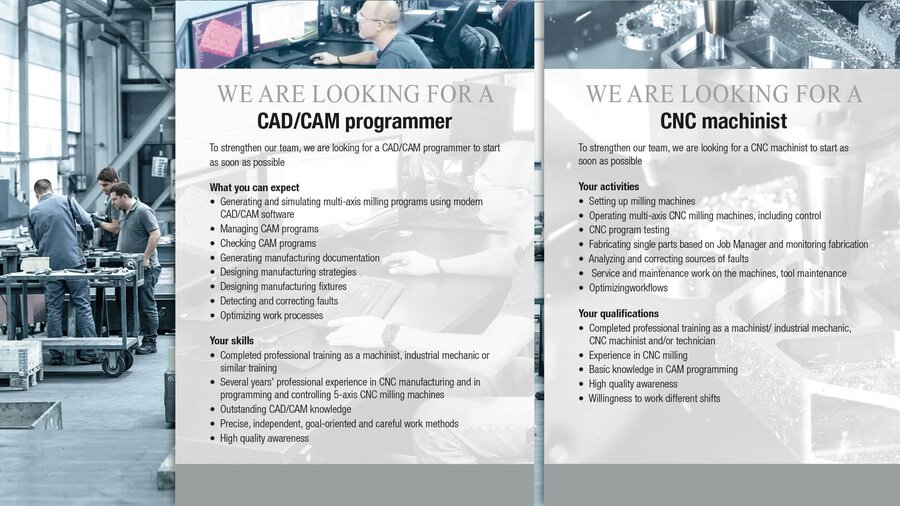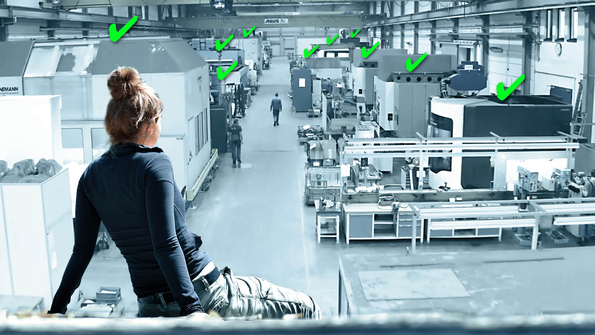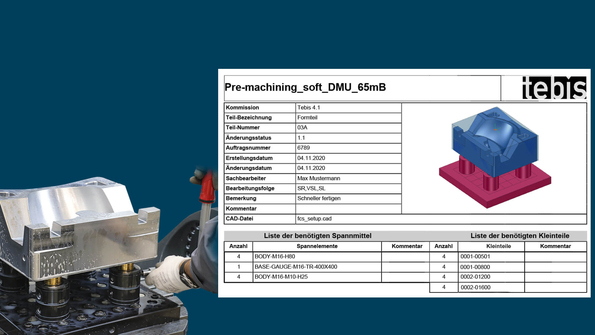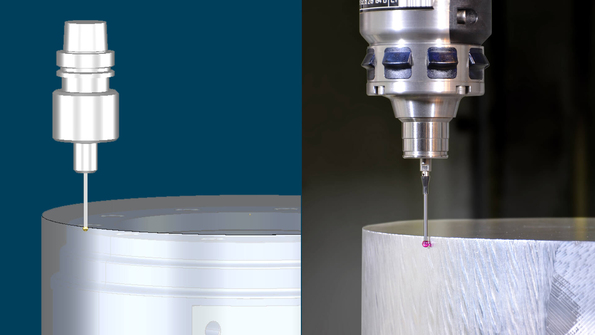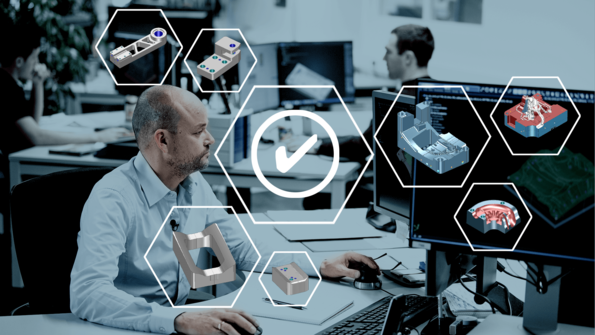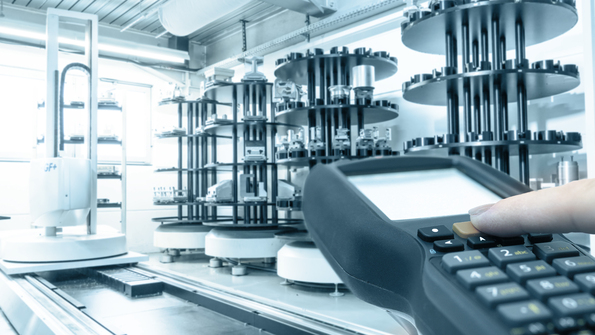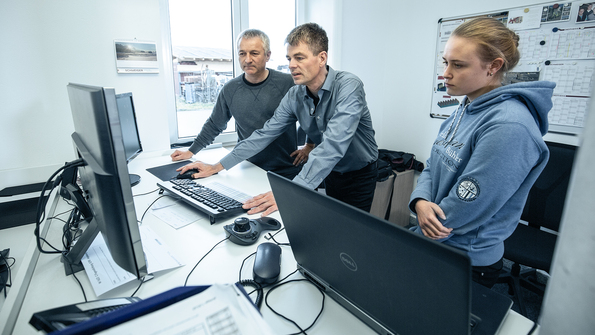Is the skilled labor shortage affecting your company? Here are 10 strategies to help.
You can certainly take several steps to optimize your search for qualified candidates in the highly competitive job market (see Tip 10). But frankly: You can't do anything per se to "stop" the skilled labor shortage. It's what we have to deal with. However, there are solutions for keeping your business running with fewer personnel and for dealing with the loss of employees.
In my opinion, the highly specialized "hardcore" machinist who does nothing but stand at the machine all day will disappear. It's not just a matter of a skilled labor shortage: Ultimately, the demand for manufacturing with fewer personnel is also a matter of increasing efficiency. Machine operators should be given the ability to independently generate CAM programs and handle several machines at once – without affecting safety. These are already common practices in many companies. It works because automation relieves employees of daily routine tasks.
Standardization lays the groundwork for all automation: For example, you need to clearly define which class a 100*500-millimeter perforated plate belongs to – because specific manufacturing methods and tools can be assigned for each class. I often hear the following: "Our parts are all so different; they can't all be pigeonholed...." But they can. And they not only can be classified – they have to be. That’s the only way to stay competitive: Standardization starts as early as costing for quotations and continues right through to the end – including work preparation and setup costs. A lack of standard tools and clamping devices is a significant cost driver!
Automation in production usually calls to mind complete manufacturing cells or automation systems with robots to load and unload machines. Those are certainly key elements (see Tip 8). But I mean something different: Machine operators assemble tools and equip magazines, they set up the part and measure it, they check the quality of the finished machining and sometimes they even monitor the machining process with a hand on the potentiometer. Many of these tasks can be eliminated or at least greatly simplified. This can be achieved by moving many of these activities and decisions to the software.
Specifically, this means the following: Using CAD/CAM software like Tebis, the CAM programmer has already set up the machine with the appropriate clamping devices. They select tool assemblies with predefined cutting data that are precisely matched to the machining operation, the material and the machine. They measure the zero point and generate additional measurement programs for quality control. They fully check the finished CAM programs for collisions.
Benefit: The machine operator knows exactly how to set up the machine, including the tools, the part and the clamping devices. Setup measurement of the part is fully automatic – especially for machining complete or semi-finished products. Because manufacturing of the overall part has already been fully collision-checked, machining starts at the optimal feed rate.
In principle, every task that repeats from part to part or for specific part categories can be automated with standardized CAD and CAM templates. In preparation, this includes tasks like closing fill surfaces, placing the workpiece zero point and measuring points, generating the blank and positioning clamping devices. In programming, measuring programs and 2.5D and 3D machining operations – including finishing and even multi-axis roughing operations – can be generated completely automatically. As a result, your CAM programmers can focus completely on the "tricky" tasks that don't easily lend themselves to automation.
Standardized CAD and CAM templates allow employees who only occasionally generate CAM programs and usually perform other tasks to quickly complete programming activities. In the same way, employees who are changing careers who might only meet part of the "ideal" job profile, or who previously used a different CAD/CAM tool, can become familiarized in a very short time.
Clearly understood function names and clearly structured user guidance serve to simplify tasks for your employees.
Of course, end-to-end manufacturing automation goes beyond the CAD/CAM software. It affects the entire manufacturing cell and the interactions between these cells. Therefore, the CAD/CAM software also needs to provide interfaces with TDM, PDM and MES systems. It has to be easy to exchange all the relevant information.
Without a doubt: This kind of restructuring takes time. You have to digitalize your entire manufacturing environment, including all machines, tools and setup systems. These digital twins have to be transferred and structured in virtual process libraries. This lays the foundation for template technology and safe manufacturing. It also requires experienced specialists, which you may not have or be able to free up for these tasks. Don't hold back from calling on outside consultants to assist with the transition. Tebis can help you with advice and support.
10: Take a positive view!
Demographic change isn’t the only reason for the skilled labor shortage in tool, die and mold manufacturing and production machining. Young people in particular want to stay open to other industries and new tasks, and they prefer not to specialize in a single area. Fluctuation has increased overall compared with the past. However, I believe that this also brings opportunities. Automation and digitalization are viewed as less of a threat. On the contrary: Thinking about process optimization and getting actively involved in change processes instead of focusing on following method X actually increases motivation. Who can do this better than your own employees, who not only have the technical knowledge but also have a thorough understanding of the company?
And last but not least: According to sociological surveys, the social relevance of a job profile is also becoming increasingly important, even more so for women than for men. A good example can be seen at RWTH Aachen University: It renamed its "Mining Engineering" degree program to "Resource Engineering" in 2005. The number of new enrollments subsequently increased from 13 to 121. When the course of study was again renamed to "Sustainable Raw Materials and Energy Supply," there were 262 enrollments, 95 of them women (36 percent*). What does your company stand for? It's worthwhile to establish your company's relevance and communicate it to employees – and also include it in job ads and interviews.
*Die Zeit, June 2, 2022, "Rechnet endlich mit Ihnen!" (article about women in technical professions)
- Tebis 4.1 can help you save a tremendous amount of time from data import to the finished part: a 40 percent reduction can be easily achieved in all part categories. Learn how this is possible and how you can achieve this goal.
- Expert talk and presentations
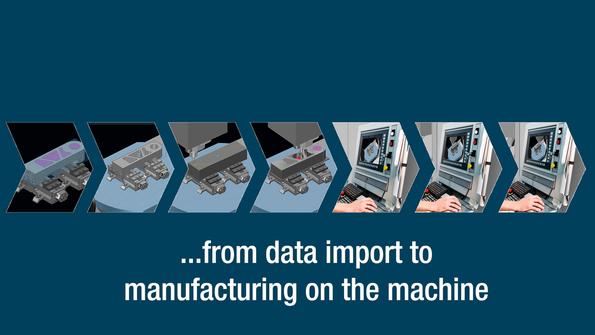
Markus Stroh (Technical Support)
Torsten Fiedler, Oliver Illgen (CAM Implementation)


